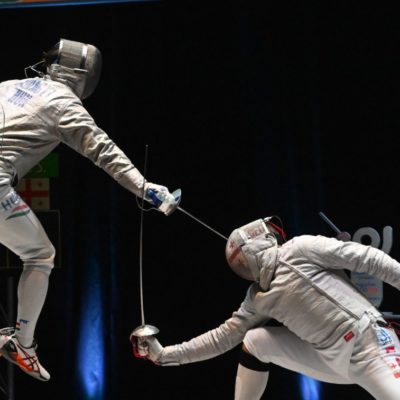Attack Phases and Common Mistakes
While the fencing strip is divided into several physical zones that can lend themselves to different tactics and systems, so too does the attack.
What are the common mistakes made by fencers in the different zones? How can you capitalize on these common mistakes?
Phase 1: First Attack – Generally a first intention action. The fencer knows exactly what they want to do and has a purpose in mind for the action. The fencer is most comfortable here as the actions are mostly forseen.
Phase 2: 2nd Attack – If the fencer renews their attack (via reprise or redoublement) then the attack has moved to the second zone. While sometimes a pre-planned action (as in a second-intention attack-redoublement), the fencer is generally a little less comfortable in Phase 2 as the actions can only be partially forseen. The fencer is banking on a correct reading of the opponent’s defensive reaction to make the redoublement.
Phase 3: The Chase – This is the most vulnerable phase of an attack. The fencer’s first (and maybe second) attack has been avoided and the defender has opened up distance, forcing either (1) the end of the action or (2) a chase by the attacker. As the defender has opened up the distance, they are now at the advantage. The attacking fencer should be wary of chasing any defender down the strip, even those that appear to be off-balance.
Most mistakes occur in the transitions between the phases of attack. Examples of this are being overcommitted to the attack in Phase 1 and falling forward at the end of the lunge, or showing an off-balance redoublement. This opens up options for the defender for both attacks on preparation, parry-riposts, and opening distance for a “distance parry” and ripost before the next phase can begin.
When attacking – remember to lunge to a point at a certain distance. That way, if the defender opens up the distance you don’t get caught leaning/overextending to reach for the target. Once you are overextended on the first attack, your time to transition to the next phase or to a new action increases, shifting the initiative to your opponent.
When defending, look for the transition periods between the attack phases. Is your opponent one to end with a Phase 1 attack, or do they give chase when you open up the distance in the middle of their attack?
Overall, this is the idea of space control. Control the space you use on the strip and don’t be drawn into overextending where you can’t respond quickly to the changes in distance your opponent uses.





